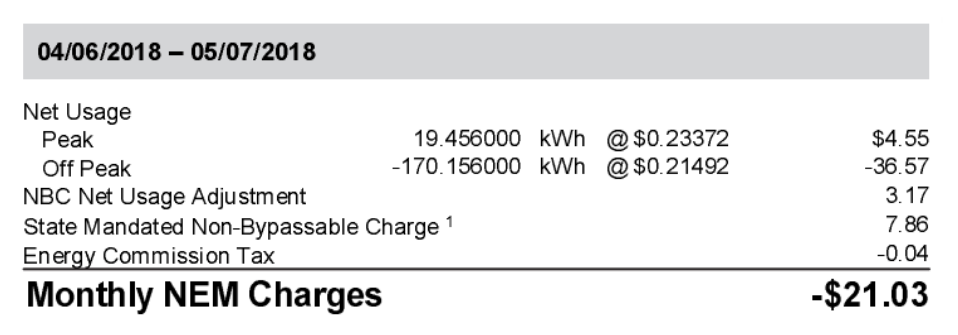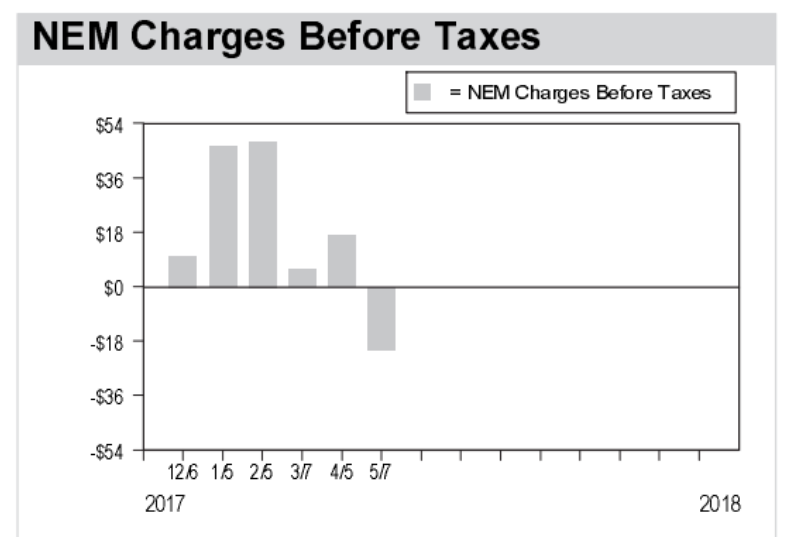Here’s How to Understand Your PG&E Bill After Going Solar
For residents of California who are customers of the Pacific Gas & Electric (PG&E) company, one of your biggest questions before you decide to switch to solar is what a typical electric bill would look like once your system is installed. Your monthly electric bill will vary from the utility company to utility company, so in this post, we will look at a solar electric bill from PG&E.
Understanding what your future bill looks like is important for any prospective solar panel owner because the primary purpose of adopting a solar system for many is the monthly savings they can receive on their electric bill.
Monthly Statement
Each month you will receive an energy statement from PG&E that shows you how much money is due. The total cost that you must pay for that month is only the minimum delivery charges.
Other charges in your bill such as charges for your electricity use and net energy metering (NEM) balance will be accounted for in your annual True-Up Energy statement. This report shows you your year-to-date charges and credits for NEM and will have you pay a balance if you used more electricity than you produced for that year.
Net Energy Metering (NEM)
These credits can then be put towards an equal amount of energy that you used at a later time. This is especially useful for when homeowners are generating a significant amount of energy during the summer and they want to use those credits during later months when they are producing less.
On your PG&E electric bill after going solar, there will be a section going over your monthly NEM balance. This gets added to your entire balance that gets paid with your annual True-Up Energy statement.
This part of your bill also displays your energy usage during peak and off hours. This relates to PG&E’s time-of-use (TOU) payment structure, where the rate for electricity varies throughout the day. Any negative numbers come from excess electricity being generated that month.
There is also a state-mandated charge of $7.86 no matter how much electricity you consume.
This charge, coupled with the NBC Net Usage Adjustment make up the minimum delivery charges that must be paid each month. This is why it is never fully possible to pay zero dollars on your electric bill, however you can earn money from your annual True-Up Energy statement if you produce more energy than you consume over the year.
The minimum delivery fees are necessary to keep your solar panel system connected to the grid and to allow you to continue using PG&E’s solar services.
NEM Balance
 Your NEM balance relates to the annual True-Up Energy statement where you pay all of your cumulative charges for NEM. You can minimize this balance by saving up credits and minimizing your own electricity consumption.
Your NEM balance relates to the annual True-Up Energy statement where you pay all of your cumulative charges for NEM. You can minimize this balance by saving up credits and minimizing your own electricity consumption.
For instance, in the image above, the solar customer currently owes PG&E a positive amount from the winter months. However, this is on a downward trajectory as the customer approaches summer and the array begins to produce more electricity.

In addition, you will receive a graph of your NEM charges before taxes, which also shows you month-by-month performance, rather than a cumulative total. This gives you a better idea of which months you are negative and are producing more energy than you are consuming.

Lastly, you will be able to see your day-by-day performance. In the above image, you can see the overall amount of kilowatt hours (kWh) being consumed or produced. Whenever there is a negative value, that means the homeowner was able to generate more energy than what they used. Check this video to know more about kilowatt hour.
Your average daily use is also displayed in this section of your PG&E solar bill.
Flexibility and Opportunities to Save
PG&E offers a billing structure that allows an energy consumer to optimize their production and consumption of solar energy so that they can minimize their electric bill. From PG&E’s TOU payment structure to their NEM payment model, solar panel owners in California have a lot of flexibility in how they manage their energy use.
If you are a PG&E customer, solar could be a great option for you. When you are ready to move forward with your solar project, get started with one of our personal Energy Advisors here at Solar.com!








